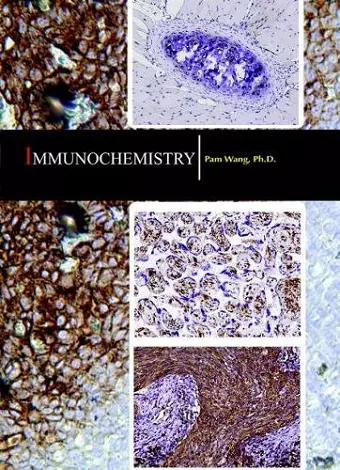Immunochemistry
Format:Hardback
Publisher:Delve Publishing
Published:30th Nov '16
Should be back in stock very soon

Immunochemistry is a sub-discipline of chemistry that focuses on the interactions between antibodies and antigens, which relate directly to the function of the immune system. Broadly speaking, immunochemistry is divided into two main areas of study: immunocytochemistry and immunohistochemistry.
In immunocytochemistry, an antibody is used to label a specific protein (or antigen) to determine its expression and localization within a cell. Typically, a fluorescence-based method is employed, wherein a primary antibody (that is known to bind to the protein of interest) is added to cells, followed by a reporter-coupled secondary antibody. This method allows for visualization of the protein under a fluorescence microscope, and bypasses the need for introducing fluorescent tags (e.g. green fluorescent protein, or GFP) which may interfere with the protein’s structure or function. One common method of preparing samples for immunocytochemical analysis involves growing adherent cells on plastic support, then fixing and permeabilizing them (with organic solvent and detergent) to allow for antibody uptake. Alternatively, samples can also be analyzed in the form of cellular smears, swabs, aspirates, and suspensions. In certain cases, enzyme-coupled antibodies (such as horseradish peroxidase) or biospecific small molecules are used instead of a fluorescently labeled antibody. Although a two-antibody system (primary followed by a reporter-coupled secondary) is generally more sensitive and therefore preferred, immunostaining can be performed with a single antibody reporter in cases where the protein of interest is particularly abundant, or exhibits a strong affinity towards the antibody. On the other hand, immunohistochemistry refers to an antibody-assisted method of visualizing cellular components within complex tissues. This technique has important applications in medicine and underlies many diagnostic procedures, allowing for a direct comparison between healthy and diseased tissues on a subcellular level. Tissues for immunohistochemical analysis are fixed, embedded in paraffin blocks, then sectioned before protein detection. Similar to immunocytochemistry, the detection step involves a primary antibody that binds specifically to the protein of interest, followed by a reporter-coupled secondary antibody. However, in immunohistochemistry, enzymatic reactions that generate a colored deposit are more commonly used for detection than fluorescent methods; colored precipitates (usually blue or brown) are easily visualized with a light microscope and are stable over extended time periods. Nevertheless, fluorescent antibody reporters offer the advantage of labeling multiple protein targets in a single...
ISBN: 9781680959000
Dimensions: unknown
Weight: unknown
230 pages